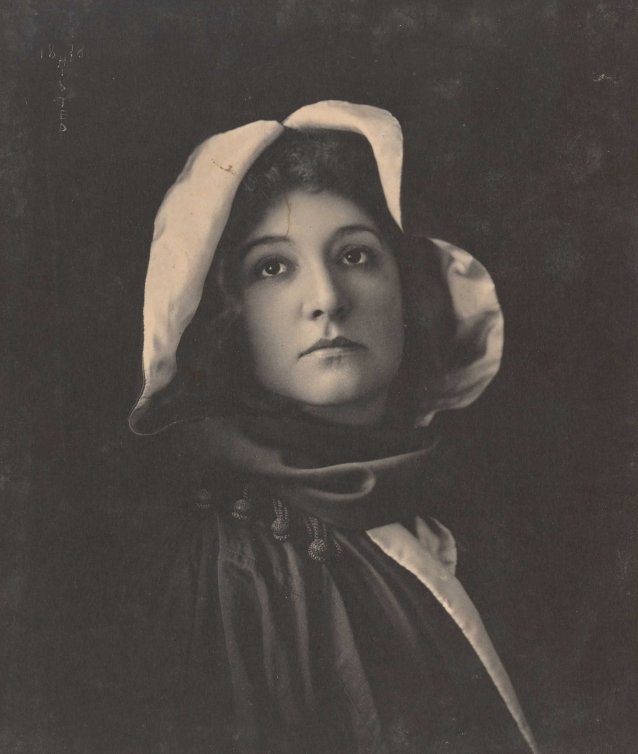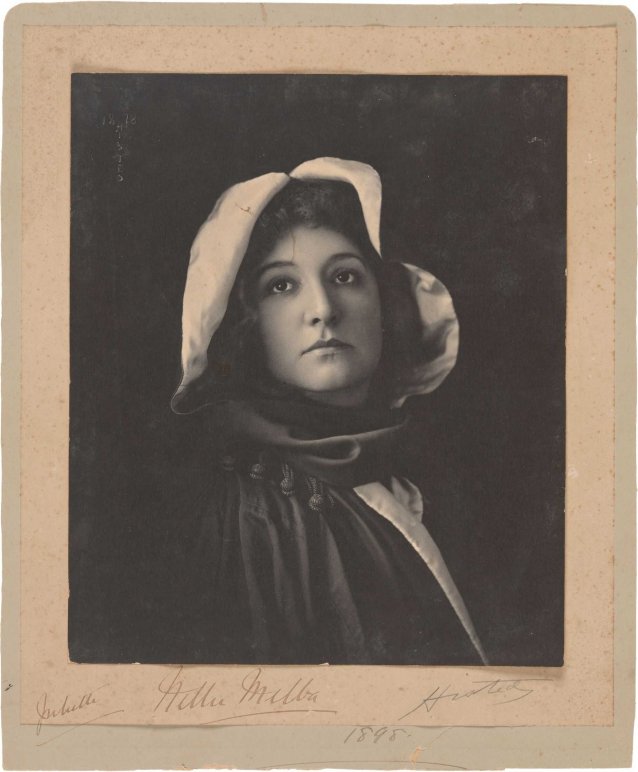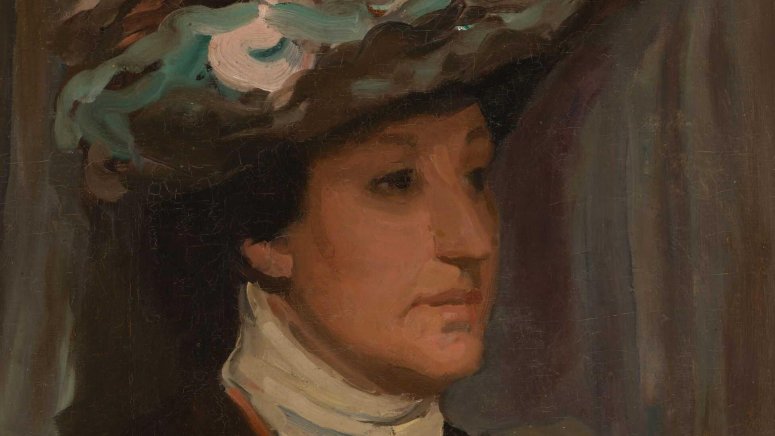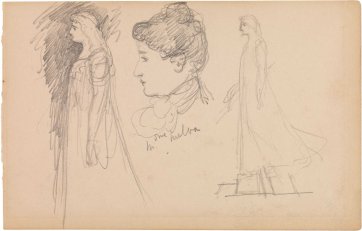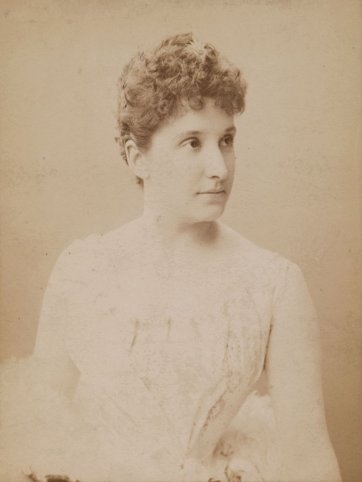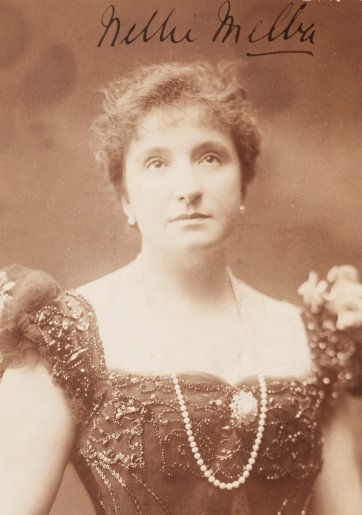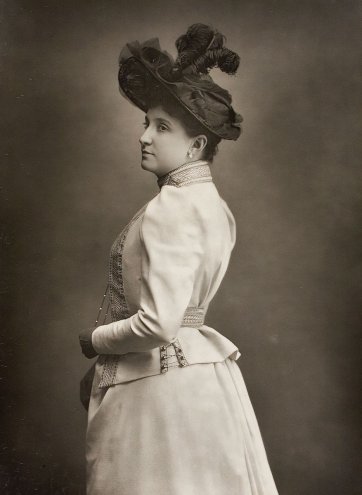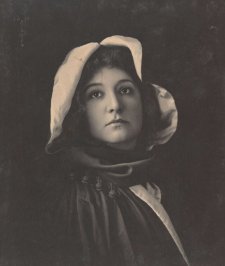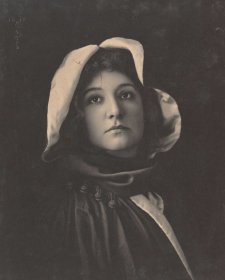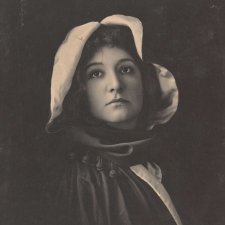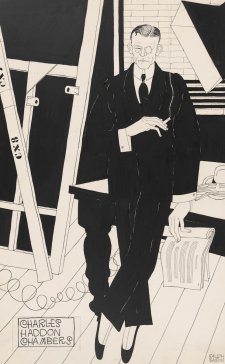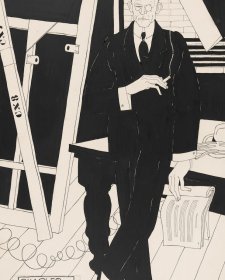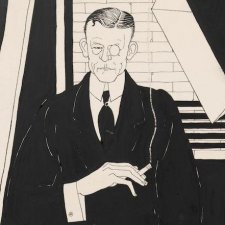Dame Nellie Melba GBE (Helen Porter Armstrong, née Mitchell, 1861–1931) was a world-renowned soprano. Raised in Melbourne, at the age of twenty she was taken by her widower father to Mackay, where she met Charles Nesbit, a man who, according to her biographer, ‘agreeably combined exceptional skills as a rough rider with the recommendation of a gentle birth’. She had a son with him, but after a year she left him, returning to Melbourne to study under Pietro Cecchi. Making her way to Paris she became a pupil of Mathilde Marchesi, on whose advice she adopted the name Melba, derived from her native city, Melbourne. After making her début in Brussels in 1887, aged twenty-six, she made her Covent Garden debut in Lucia di Lammermoor the following year, but it was from June 1889, when she sang the title role in Gounod’s Romeo et Juliette, that she dated her success in London. Henceforth she performed regularly at Covent Garden, where she maintained a private dressing room and gave her final performance in 1926. Over the same period, mobbed everywhere by fans and enjoying the attention of many lovers including Philippe, Duc d’Orléans, she made sensational tours of the USA and Europe. Partly resident in Australia from 1909 onwards, she sang the national anthem at the opening of Parliament House, Canberra in May 1927, during the period in which she made so many farewell appearances that across Australia the phrase ‘doing a Melba’ came to mean making repeated announcements that one is leaving, without actually departing. On her grave in Lilydale Cemetery, Melbourne, is the farewell uttered by Mimi in La Bohème: ‘Addio, senza rancor’ (‘Goodbye, no hard feelings’).
Ernest Walter Histed was born in Brighton, UK, but made his reputation as a photographer in Chicago and later in Pittsburgh. He returned to England to set up a studio first in New Bond Street and then in Baker Street. In 1898 he made portraits of H Rider Haggard, Clara Butt and the Empress of Germany, the last by command of Queen Victoria at Windsor castle. He also photographed Royal Academicians, leading actors for The Candid Friend and Pope Pius X. The firm continued as Histed and Company when he moved to New York to operate a studio on Fifth Avenue. Having relocated to Palm Beach, Florida, he continued to work until 1934. The largest collection of his work is held by the Museum of the City of New York; the National Portrait Gallery, London, has thirty of his portraits.
Collection: National Portrait Gallery
Purchased 2010
The National Portrait Gallery respects the artistic and intellectual property rights of others. Works of art from the collection are reproduced as per the
Australian Copyright Act 1968 (Cth). The use of images of works from the collection may be restricted under the Act. Requests for a reproduction of a work of art can be made through a
Reproduction request. For further information please contact
NPG Copyright.
